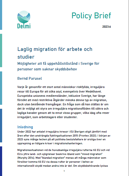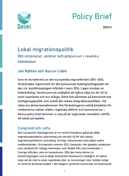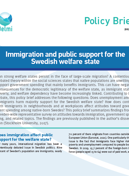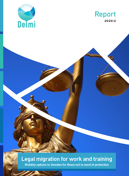Using previous research and data from DEMIG (Determinants of International Migration) for the years 1980-2023, this Research Overview examines how Swedish migration policy has been shaped during these years. It looks at what decisions have been made, whether they have been more or less restrictive, how they have been made, and how the actors and arenas of decision making have changed over time.
Two shifts are highlighted in this Research Overview. The first shift is identified in the early 1990’s, when migration policies became more politicized and the forms of decision-making changed. The Parliament has grown in relevance for issues that previously could be handled by the government and the administration. The second shift is in the mid-2010’s, with a more restrictive migration policy, especially compared to the period 2005-2009, however, this cannot yet be concluded to be part of a longer-term trend towards more restrictiveness. In the future, an increased Europeanisation, i.e., more decisions being taken at EU level, will influence how Swedish migration policy is shaped.
An overarching conclusion from this research overview is that the formation of migration policies doesn’t follow a single mutual logic or follow a common pattern for how decisions are made. Since the nature of the issues differ, there are several different logics and patterns that interact, and it is necessary to highlight these different logics to understand how migration policies are formed.
About the author
Henrik Malm Lindberg is Associate Professor of Economic History and holds a Ph.D. from the Department of Economic History at Uppsala University. He has worked mainly on labour market issues, wage formation, education and political history. Previously, Henrik Malm Lindberg has worked at The Ratio Institute, and as a lecturer at Uppsala, Stockholm and Dalarna Universities. Henrik Malm Lindberg is currently deputy head of Delmi’s secretariat.
The Policy Brief was published May 20th 2024.
The research overview was puplished December 18th 2024.
Image: Martin Castaneda via Unsplash




